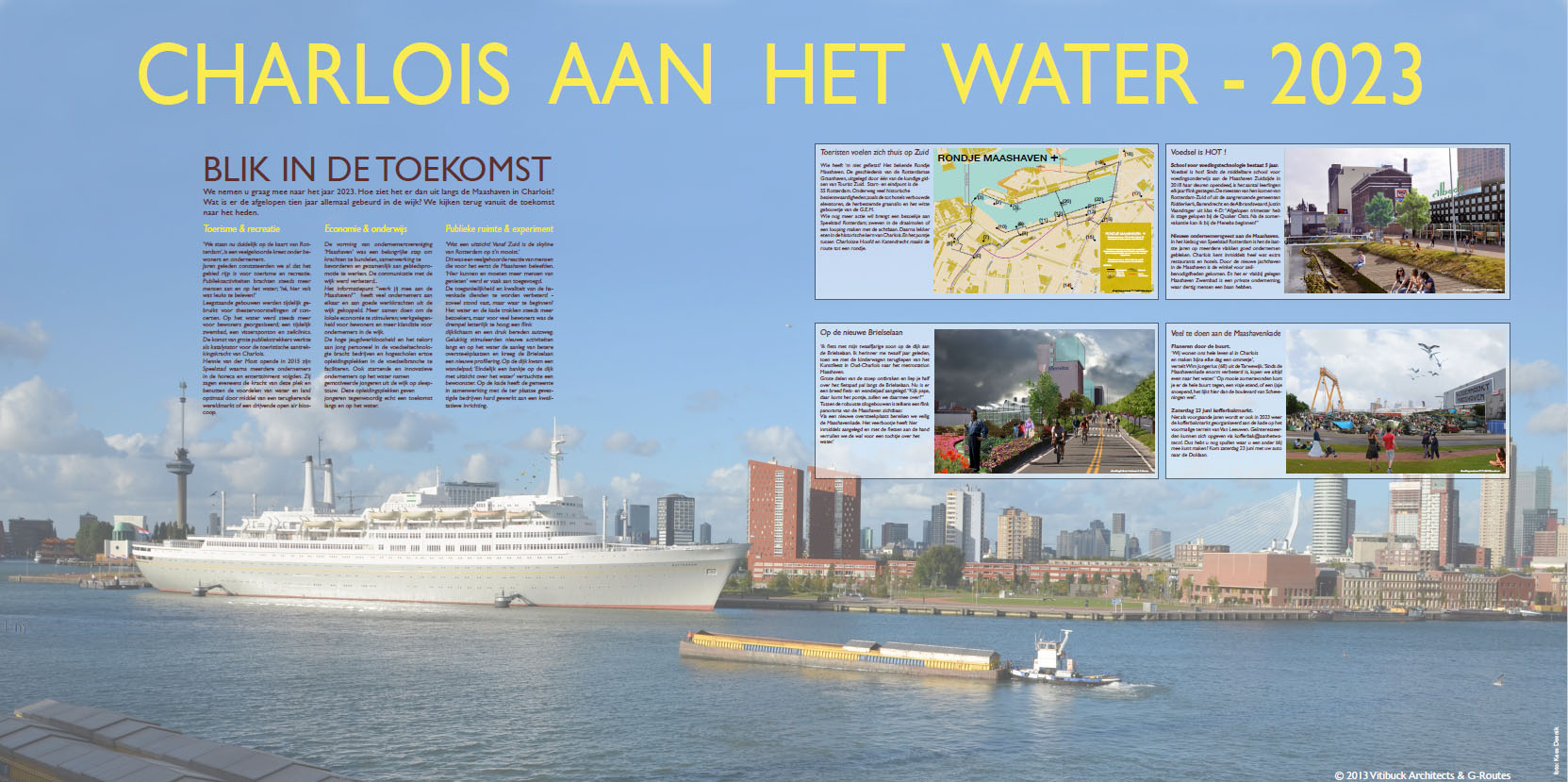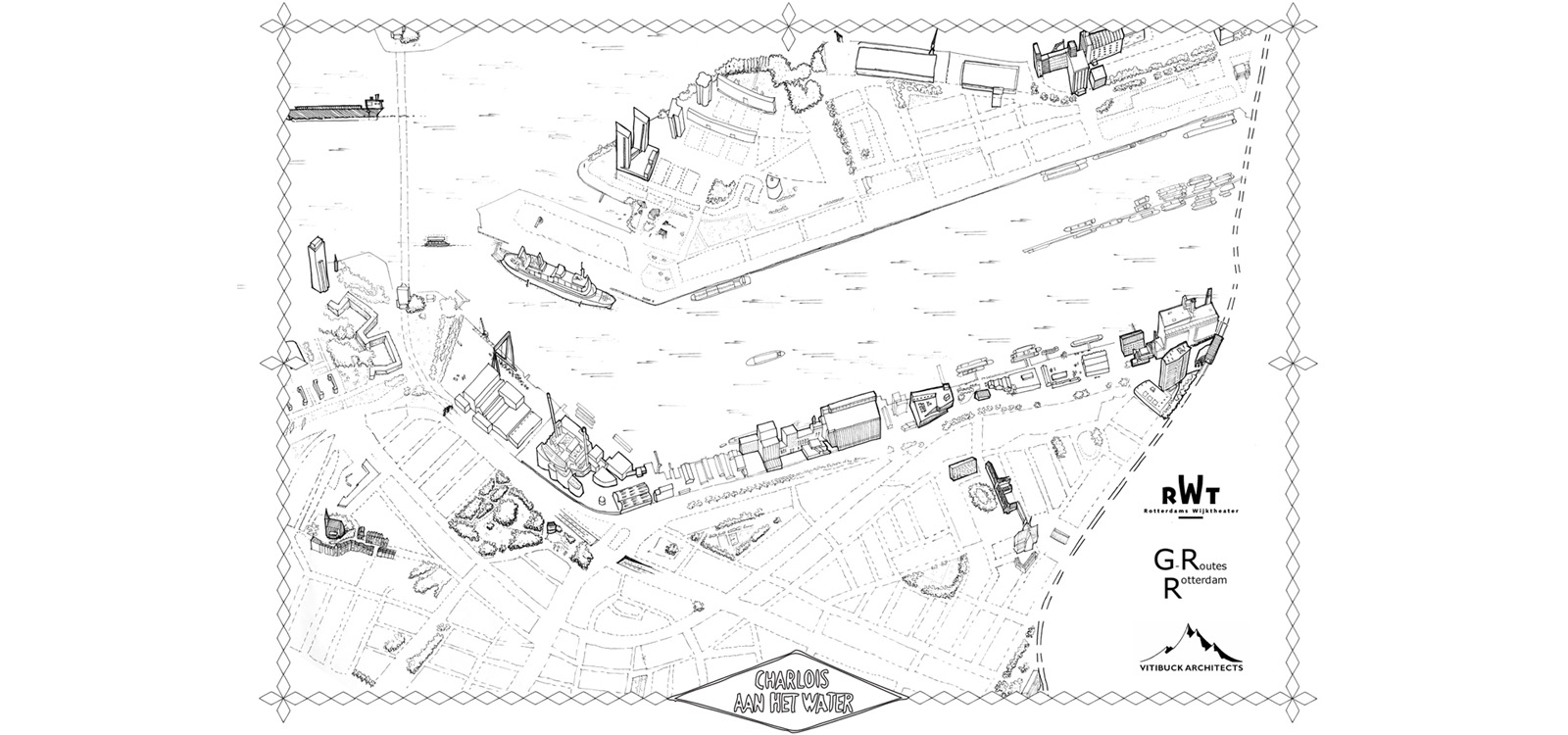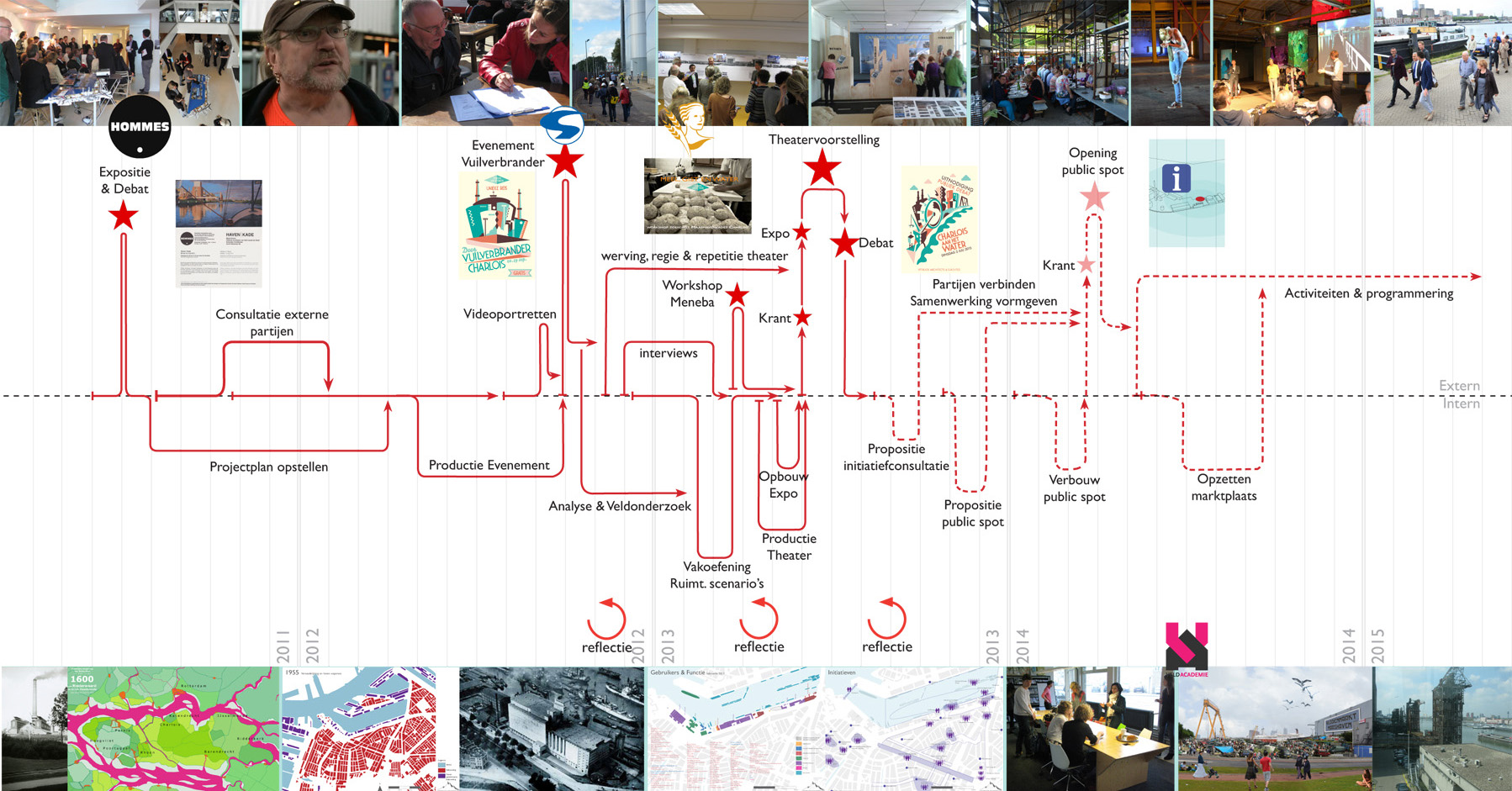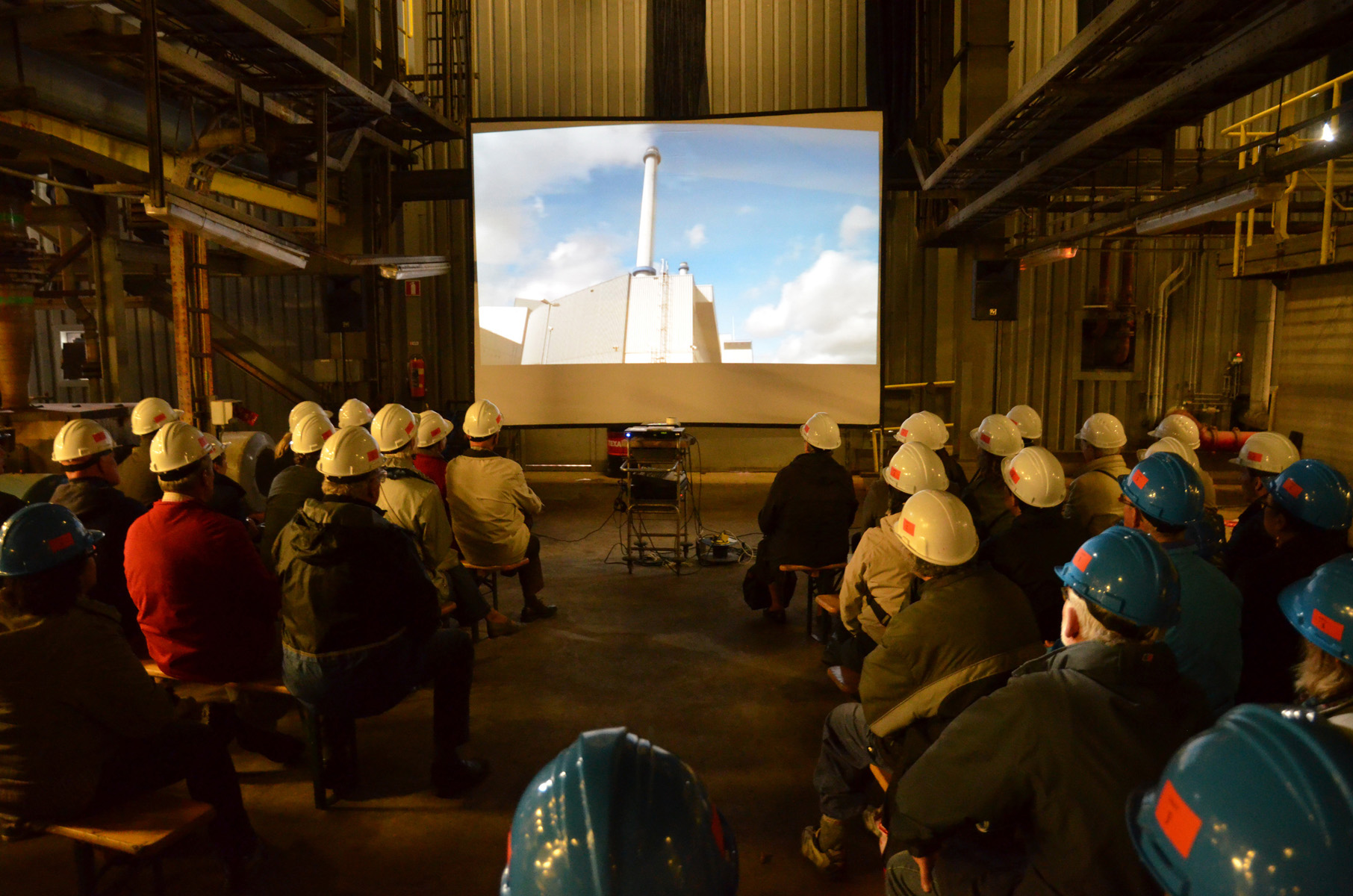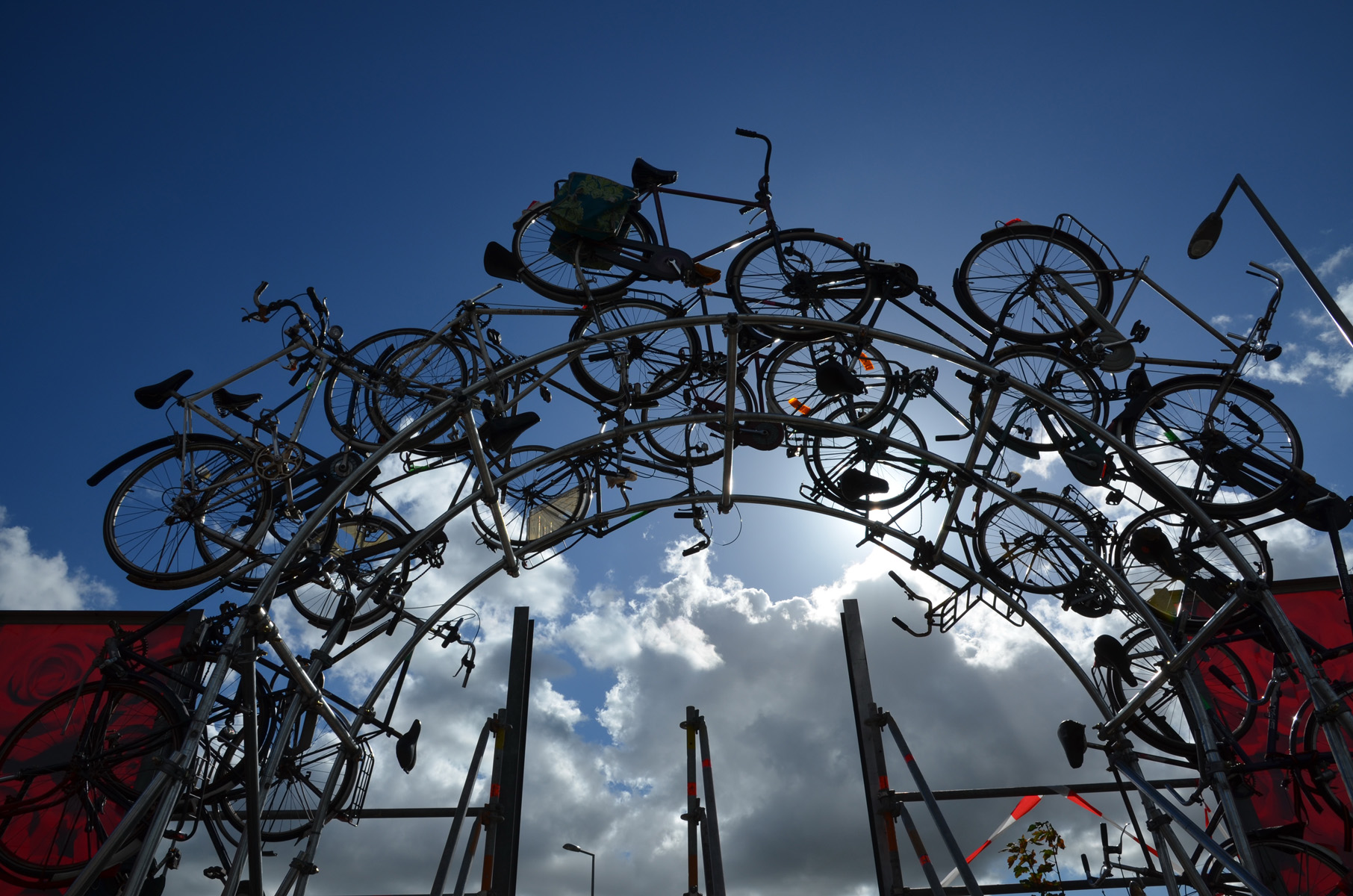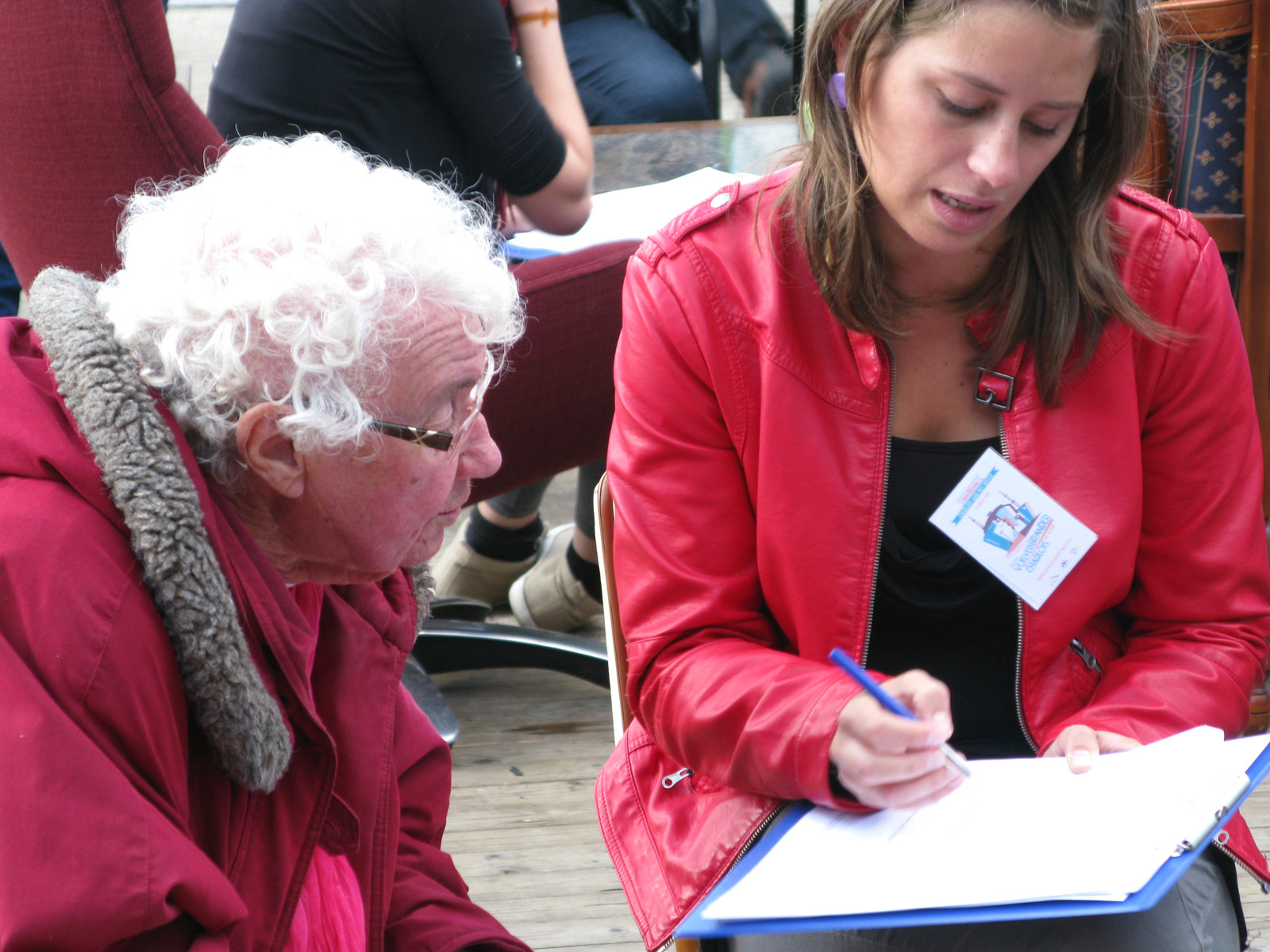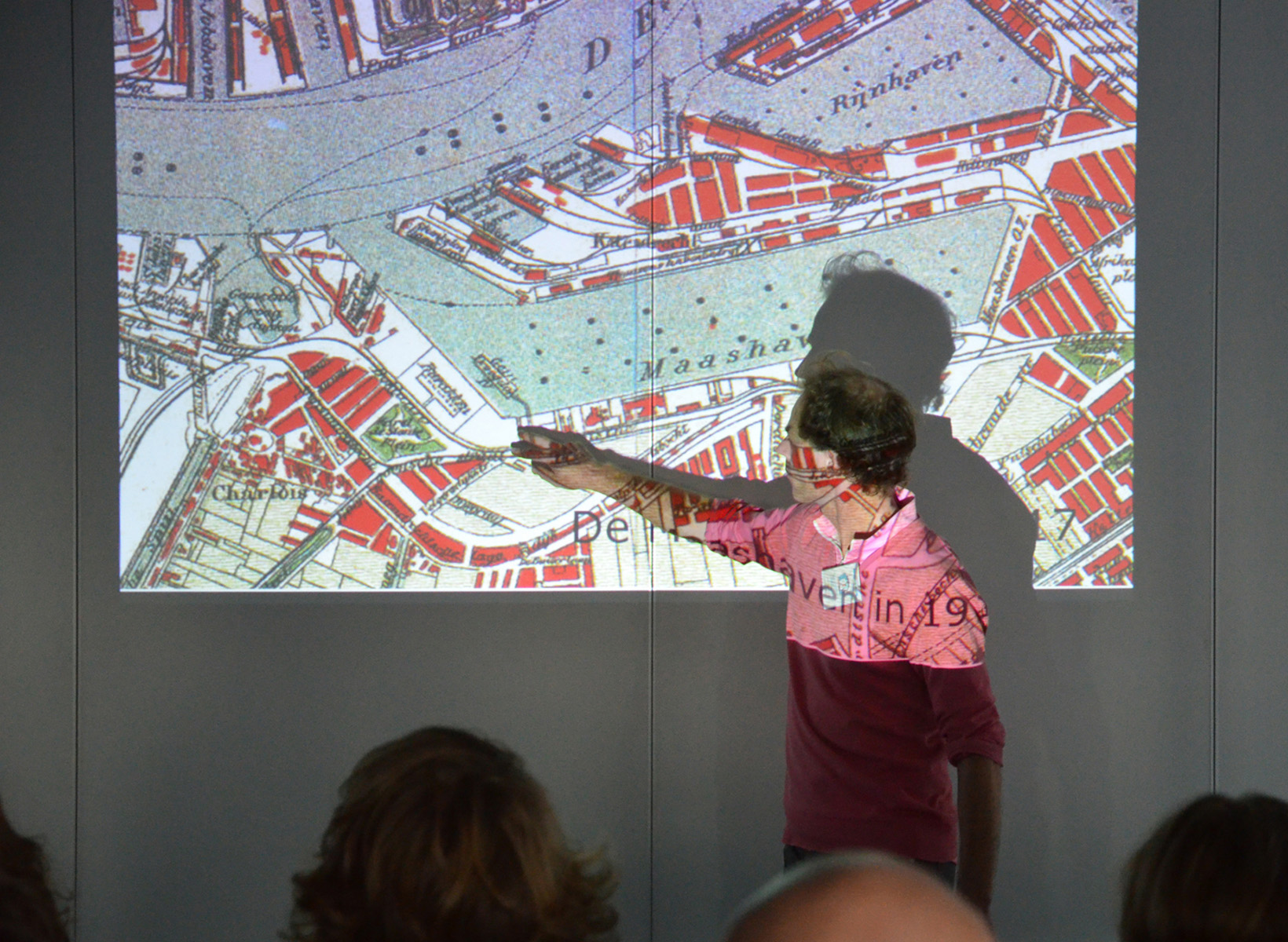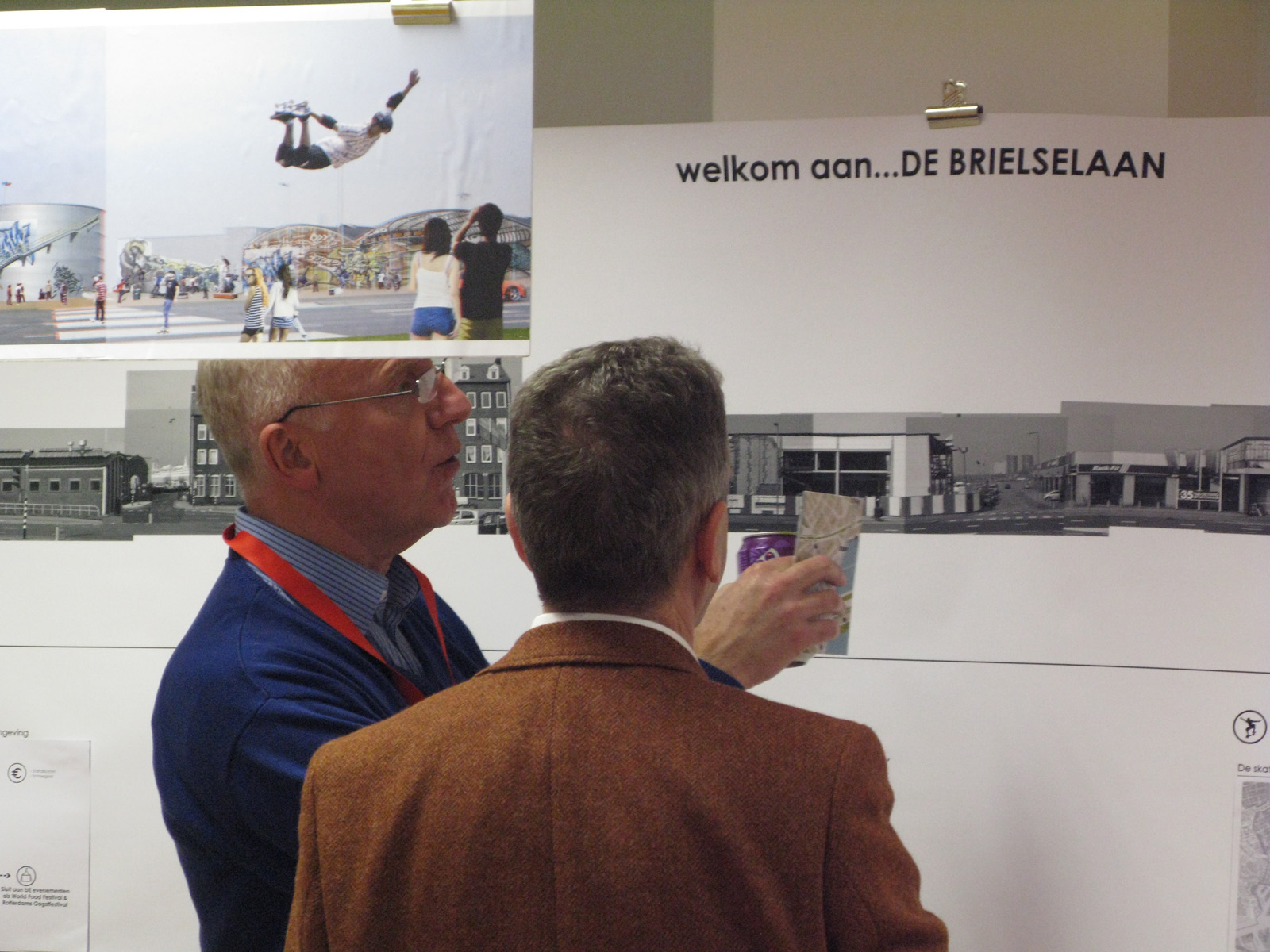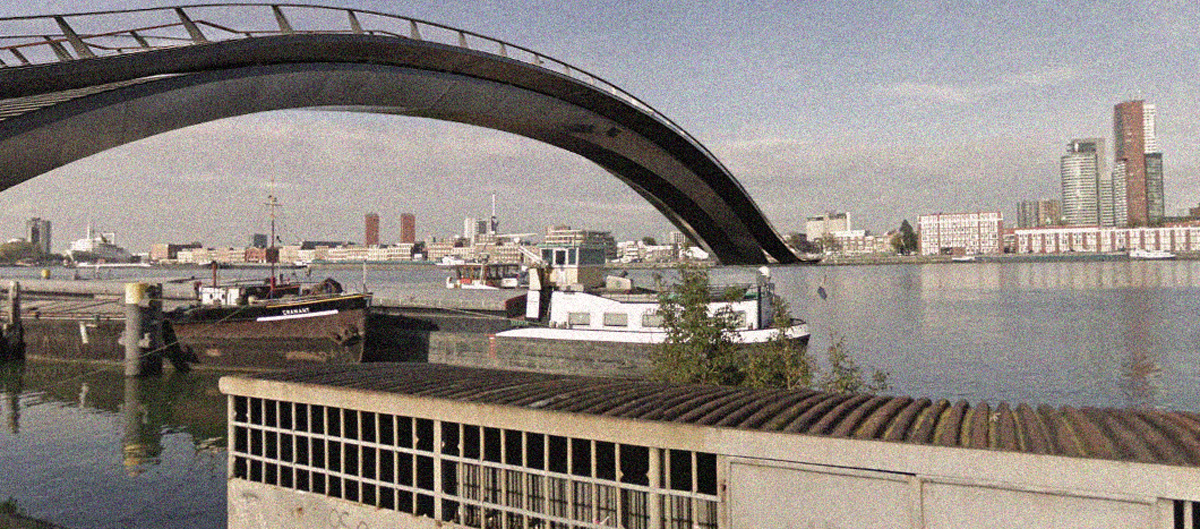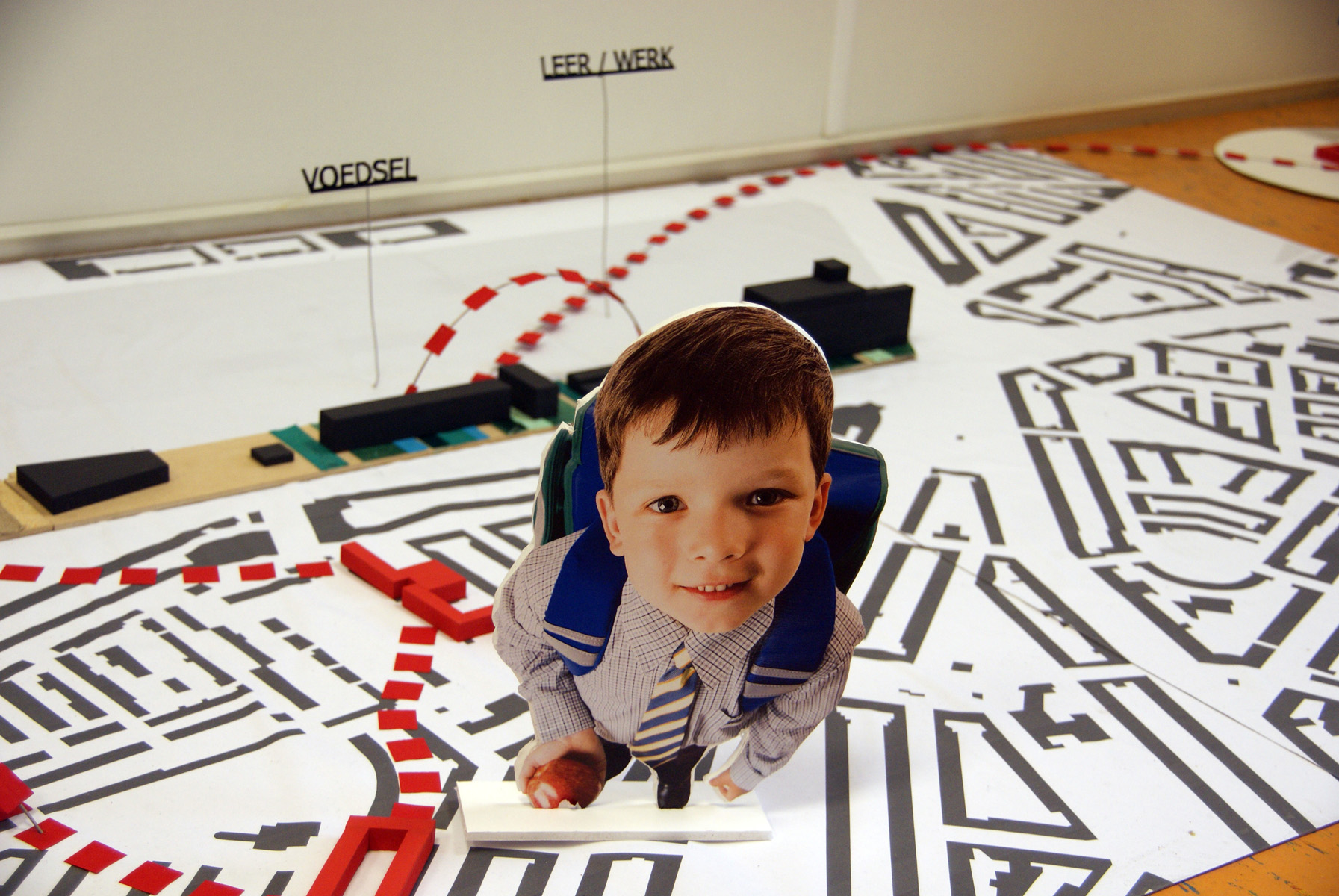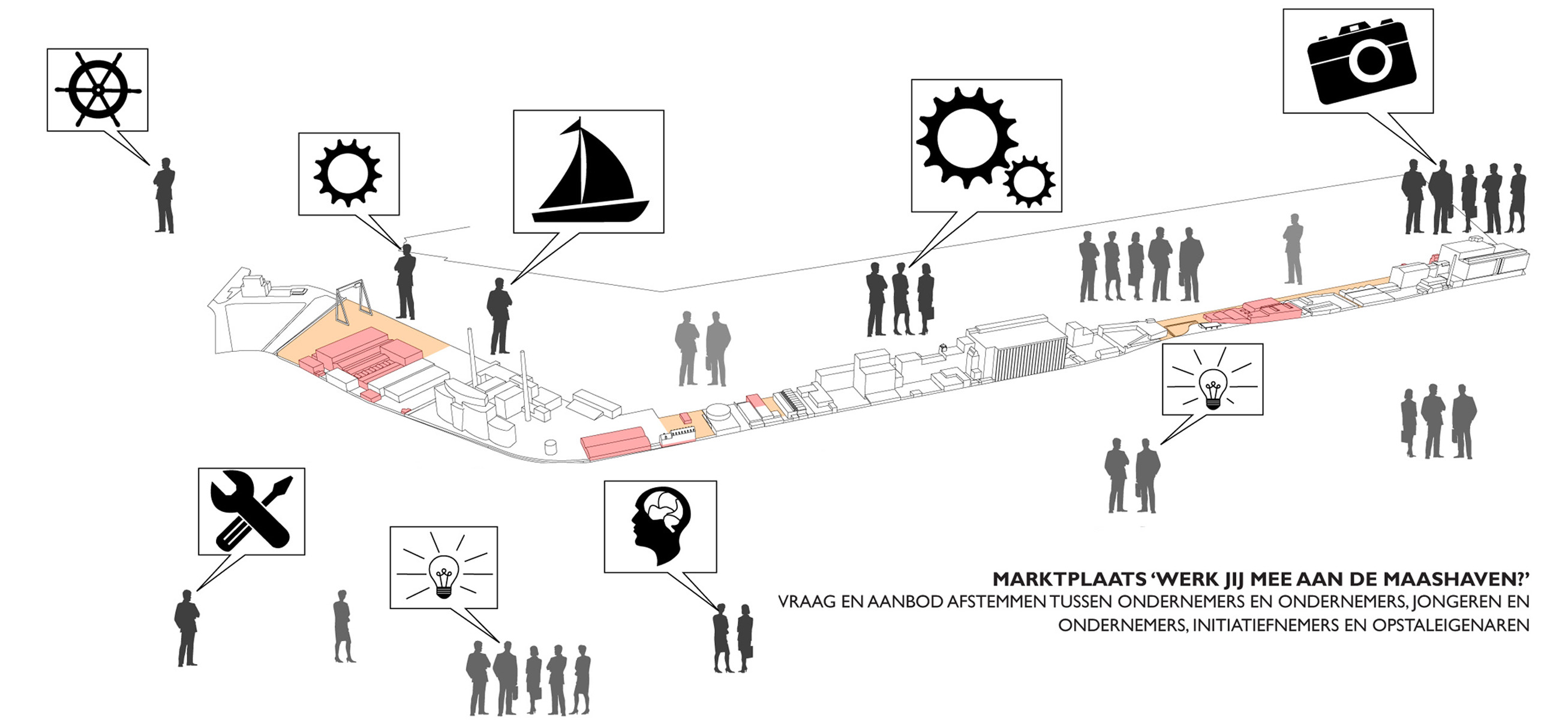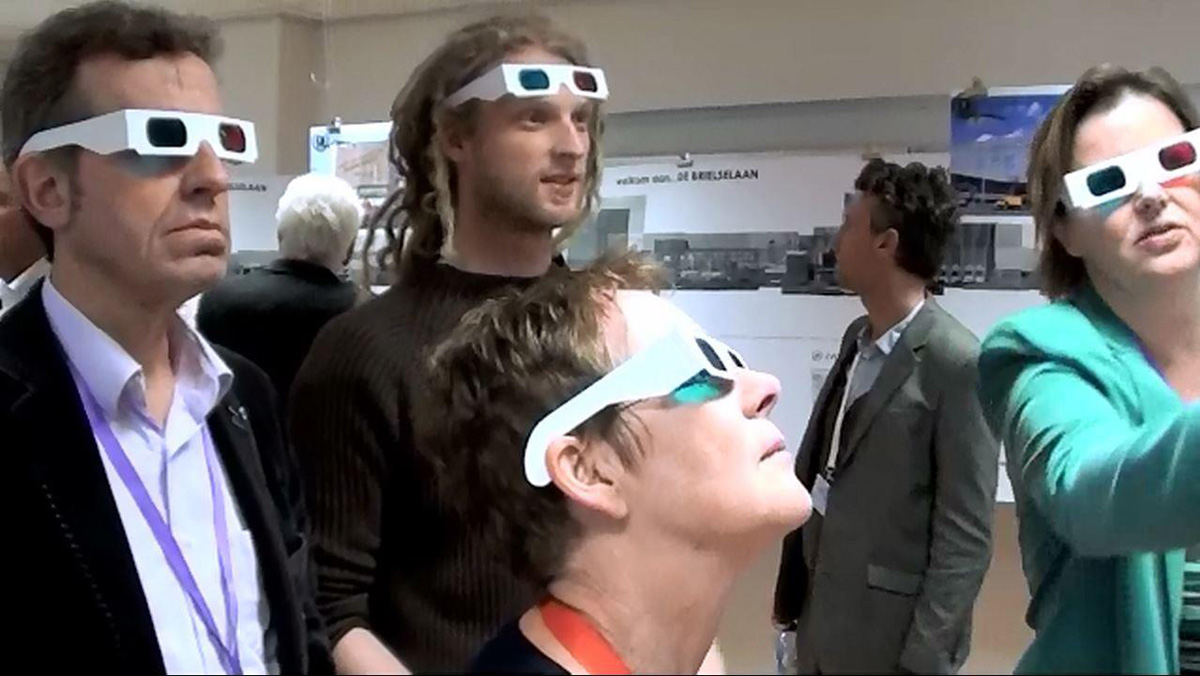Samen stad maken
Charlois aan het Water is een zoektocht naar de kansen en mogelijkheden van een binnenstedelijke havenlocatie op ruimtelijk, economisch en sociaal-maatschappelijk vlak.
Het project is een interactief proces met en voor bewoners, ondernemers en beleidsmakers. Het gaat over beleving enerzijds en feiten anderzijds; zachte en harde data vullen elkaar aan.
Door middel van verschillende publieksactiviteiten (evenement, rondleidingen en theatervoorstelling) en onderzoeksmethoden (analyse, veldwerk, workshop, interviews en enquete) zijn de aanwezige potenties, belangen en behoeftes inzichtelijk gemaakt.
Actie
Als eerste teken van verandering onderging het terrein rondom de leegstaande vuilbrander AVR in Charlois een ruimtelijke en theatrale metamorfose. Voor één dag is het opengesteld voor het publiek. De thematiek van het eerste publieksmoment was afval en hergebruik. De Re-Cycle-Poort, op locatie gemaakt uit oude weesfietsen, als symbool voor de tijdelijke openstelling van het gebied, was de publieksentree. Meer dan 500 bezoekers kwamen op de Kick-Off van ‘Charlois aan het Water’ op 29 september 2012 en werden naar hun mening gevraagd over de toekomst van de Maashavenkades Charlois.
Tijd om nieuwe ideeën te laten rijzen. Op 19 maart 2013 was de workshop “Meel, Gist en Water” bij de Meneba met bewoners, ondernemers, bedrijven en beleidsmakers. Studenten van de Veldacademie hebben een drietal toekomstscenario’s voor de Maashavenkades verbeeld. Deze scenario’s zijn onderdeel van het ontwerpend onderzoek van Charlois aan het Water en dienden als uitgangspunt voor de gesprekken.
In juni 2013 is er een leegstaande loods langs het water voor een maand geprogrammeerd met een reeks theatervoorstellingen op locatie met bewoners uit Charlois.
Tijdens het afsluitend publiek debat is de Actiekalender ‘Een jaar lang – Charlois aan het Water’ overhandigd aan wethouder Karakus met daarin 12 actiepunten voor de toekomst van de Maashavenkades Charlois.
Het project heeft de locatie Maashaven Zuidzijde op de kaart gezet, zowel bij bewoners als beleidsvoerders. Het project brengt mensen bij elkaar en zet een dialoog in gang.
Onderzoek
Naast het dialoog is het evident om op een locatie met heel diverse partijen en uiteenlopende belangen een punt aan de horizon te definieren – kijk eens mensen, daar gaan we naartoe! Dit gezamenlijk toekomstperspectief is leidend voor alle ontwikkelingen: de Maashavenkades als onlosmakelijk deel van Charlois; een vitaal, attractief gebied, dat als ontmoetingplek voor de wijk fungeert, met het water als verbindend element.
Om het punt aan de horizon te bereiken zijn er een drietal toekomstscenario’s voor het gebied ontwikkeld op basis van drie veranderthema’s: Recreatie&Toerisme, Economie & Onderwijs en Publieke Ruimte & Experiment. Elk thema biedt kansen en mogelijkheden, omdat ze de belangen van nieuwe en gevestigde bedrijven ondersteunt, op maatschappelijke tendensen inspeelt en anticipeert op de behoeftes uit de wijk.
Masterstudenten van de TUDelft/Veldacademie hebben op basis van deze veranderthema’s, voortkomend uit het onderzoek, een aantal scenario’s en voorstellen uitgewerkt. Deze zijn tijdens een workshop met betrokken partijen uitvoerig besproken.
Om sturing te geven aan het nieuwe maakproces en partijen uit te nodigen om op basis van gelijkwaardigheid deel te nemen zijn nieuwe instrumenten nodig. Vitibuck Architects heeft voor Charlois aan het Water een drietal instrumenten ontwikkelt, waarmee bewoners, ondernemers en beleidsmakers worden gestimuleerd en uitgenodigd om mee te doen: een ontmoetingplek als fysieke vertaling van de verhalen en belangen; een initiatiefkaart als motor voor nieuwe ontwikkeling en een marktplaats, waarin vraag en aanbod in intiatieven op elkaar worden afgestemd.
In het vervolg worden deze instrumenten verder uitgewerkt en getest.
